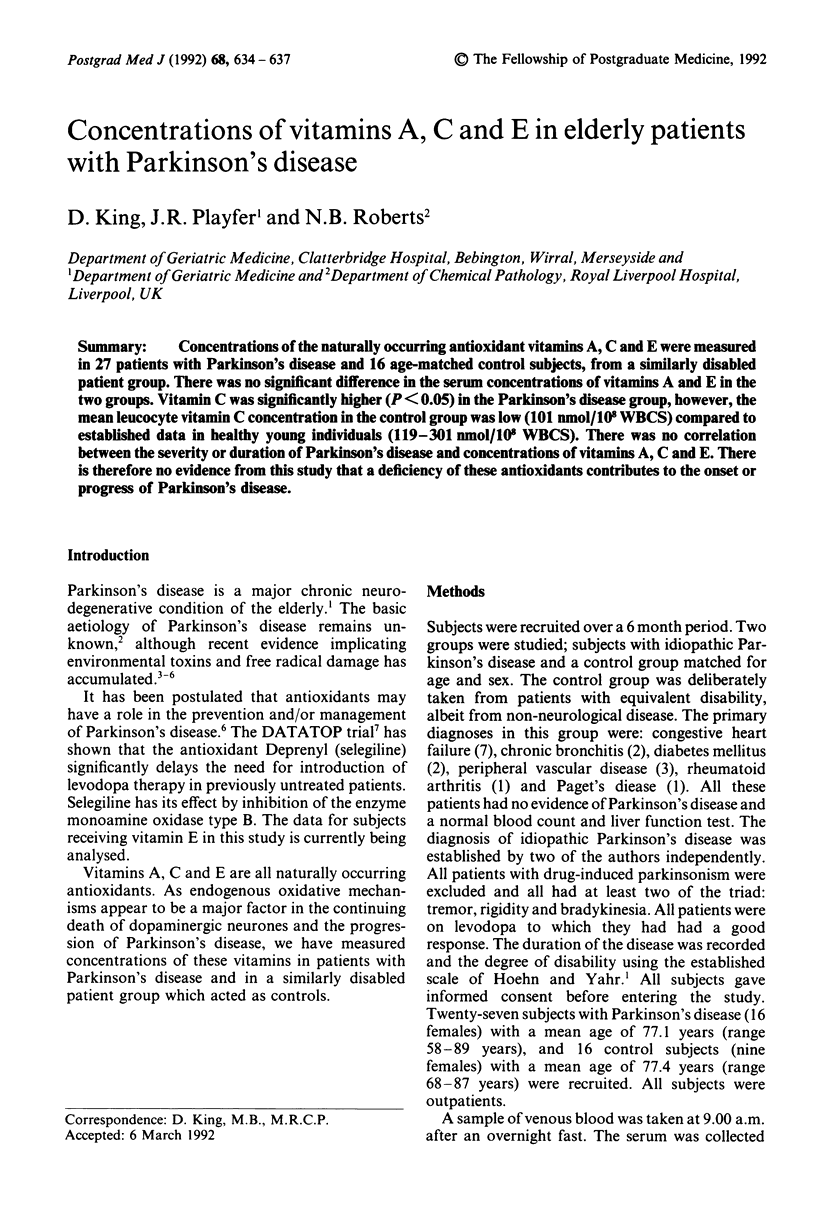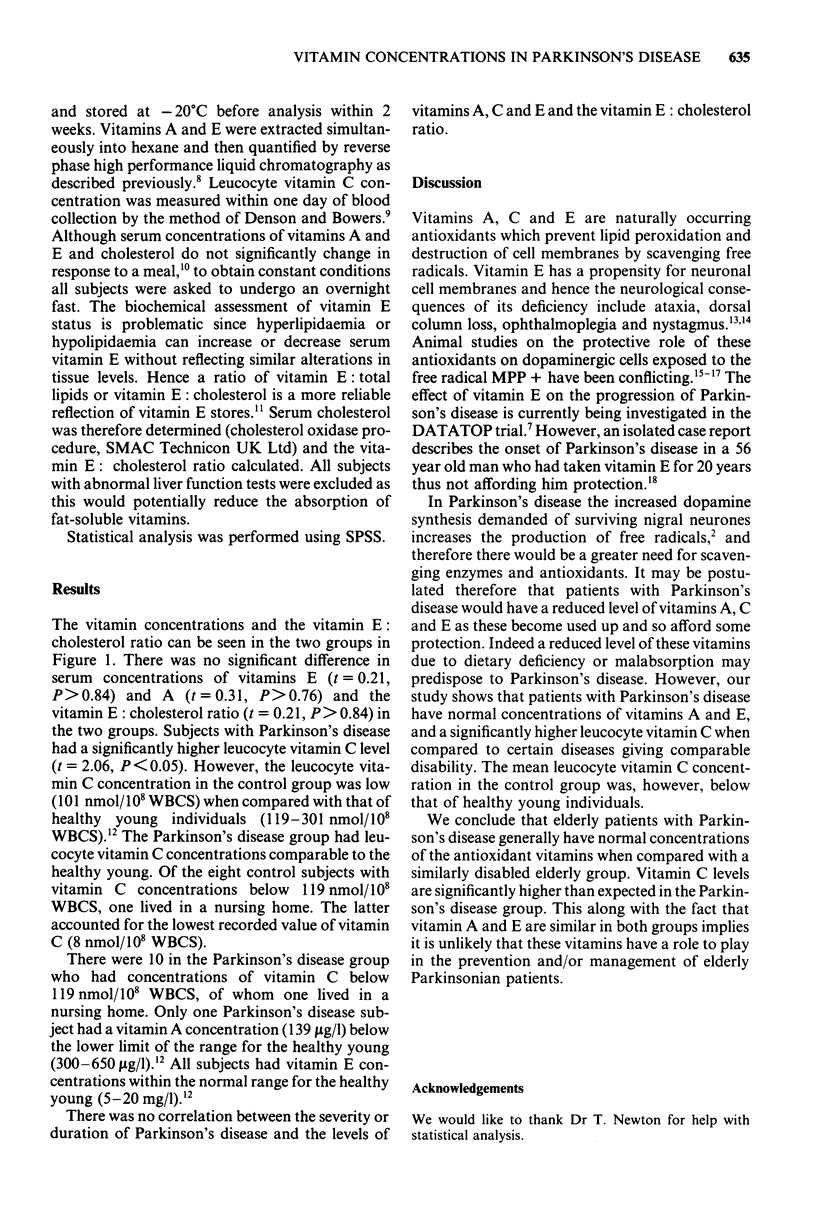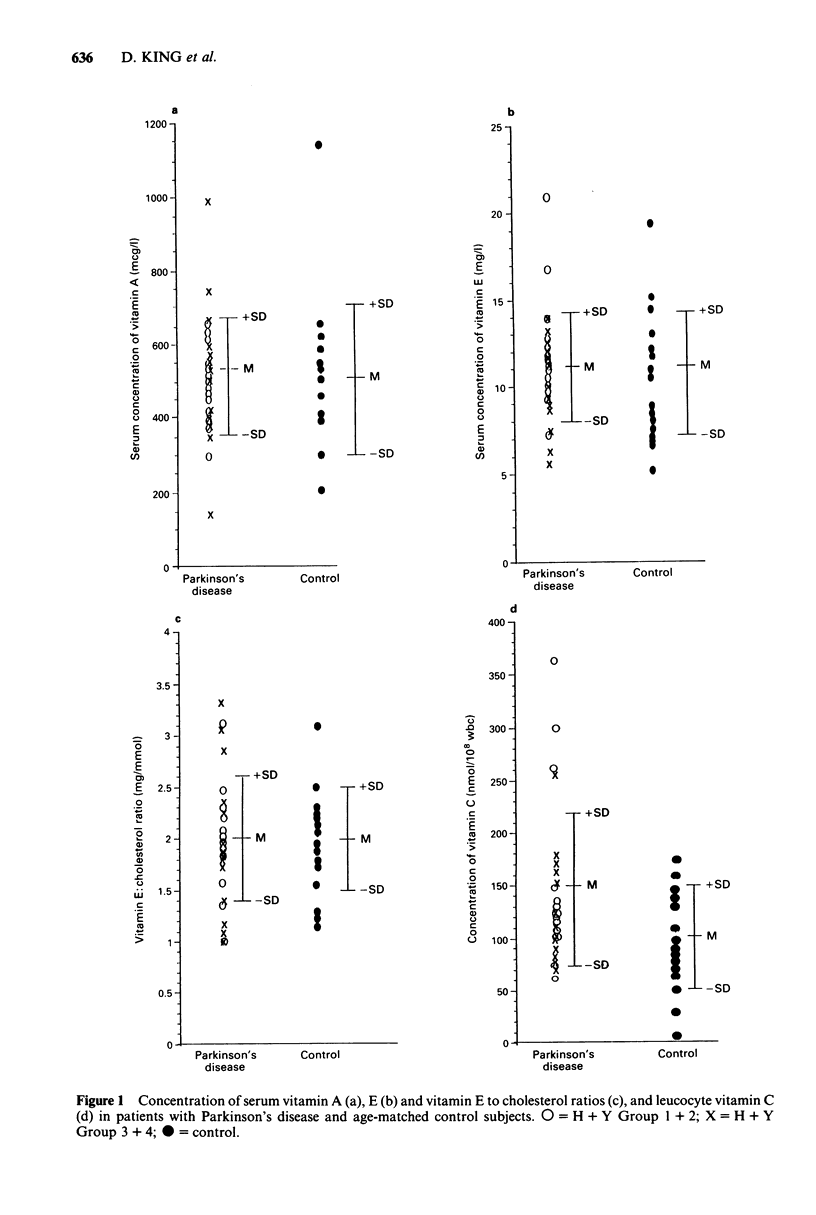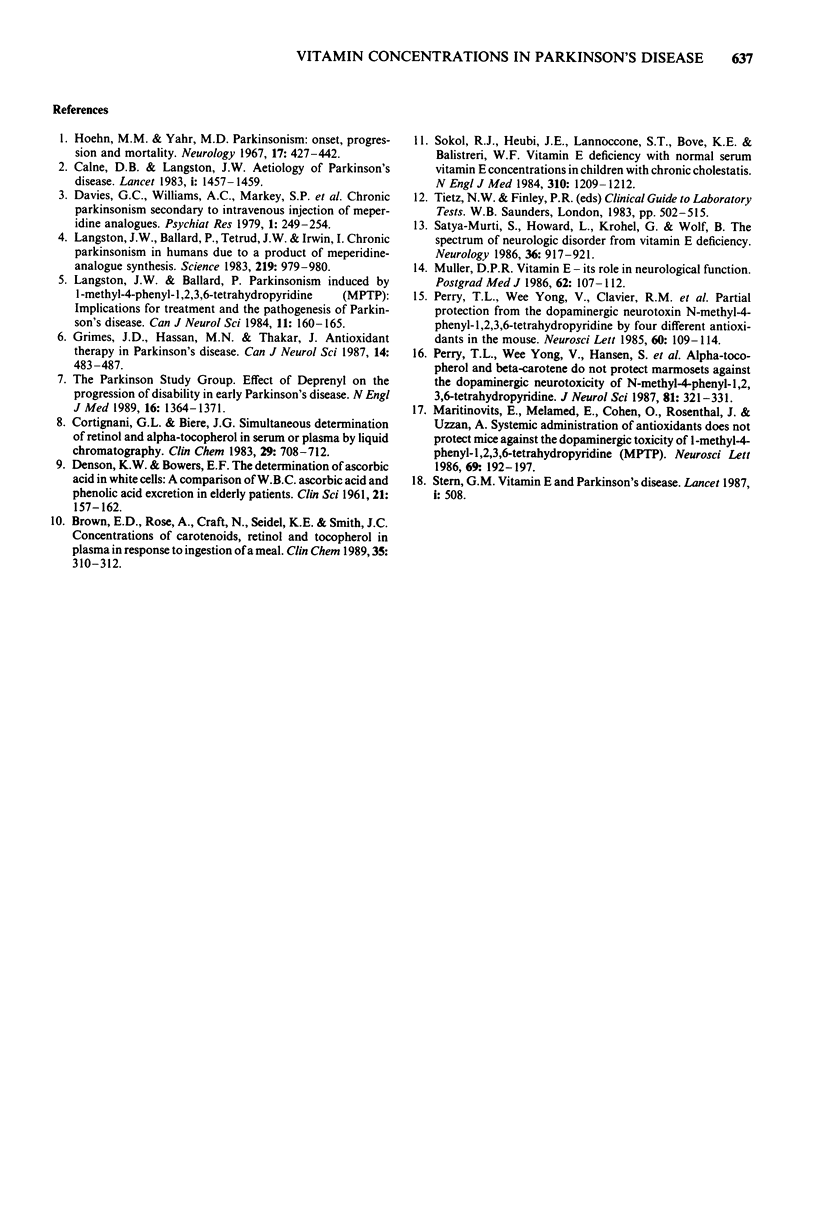Abstract
Concentrations of the naturally occurring antioxidant vitamins A, C and E were measured in 27 patients with Parkinson's disease and 16 age-matched control subjects, from a similarly disabled patient group. There was no significant difference in the serum concentrations of vitamins A and E in the two groups. Vitamin C was significantly higher (P < 0.05) in the Parkinson's disease group, however, the mean leucocyte vitamin C concentration in the control group was low (101 nmol/10(8) WBCS) compared to established data in healthy young individuals (119-301 nmol/10(8) WBCS). There was no correlation between the severity or duration of Parkinson's disease and concentrations of vitamins A, C and E. There is therefore no evidence from this study that a deficiency of these antioxidants contributes to the onset or progress of Parkinson's disease.
Full text
PDF



Selected References
These references are in PubMed. This may not be the complete list of references from this article.
- Brown E. D., Rose A., Craft N., Seidel K. E., Smith J. C., Jr Concentrations of carotenoids, retinol, and tocopherol in plasma, in response to ingestion of a meal. Clin Chem. 1989 Feb;35(2):310–312. [PubMed] [Google Scholar]
- Catignani G. L., Bieri J. G. Simultaneous determination of retinol and alpha-tocopherol in serum or plasma by liquid chromatography. Clin Chem. 1983 Apr;29(4):708–712. [PubMed] [Google Scholar]
- DENSON K. W., BOWERS E. F. The determination of ascorbic acid in white blood cells. A comparison of W.B.C. ascorbic acid and phenolic acid excretion in elderly patients. Clin Sci. 1961 Oct;21:157–162. [PubMed] [Google Scholar]
- Davis G. C., Williams A. C., Markey S. P., Ebert M. H., Caine E. D., Reichert C. M., Kopin I. J. Chronic Parkinsonism secondary to intravenous injection of meperidine analogues. Psychiatry Res. 1979 Dec;1(3):249–254. doi: 10.1016/0165-1781(79)90006-4. [DOI] [PubMed] [Google Scholar]
- Grimes J. D., Hassan M. N., Thakar J. Antioxidant therapy in Parkinson's disease. Can J Neurol Sci. 1987 Aug;14(3 Suppl):483–487. doi: 10.1017/s0317167100037951. [DOI] [PubMed] [Google Scholar]
- Hoehn M. M., Yahr M. D. Parkinsonism: onset, progression and mortality. Neurology. 1967 May;17(5):427–442. doi: 10.1212/wnl.17.5.427. [DOI] [PubMed] [Google Scholar]
- Langston J. W., Ballard P. Parkinsonism induced by 1-methyl-4-phenyl-1,2,3,6-tetrahydropyridine (MPTP): implications for treatment and the pathogenesis of Parkinson's disease. Can J Neurol Sci. 1984 Feb;11(1 Suppl):160–165. doi: 10.1017/s0317167100046333. [DOI] [PubMed] [Google Scholar]
- Langston J. W., Ballard P., Tetrud J. W., Irwin I. Chronic Parkinsonism in humans due to a product of meperidine-analog synthesis. Science. 1983 Feb 25;219(4587):979–980. doi: 10.1126/science.6823561. [DOI] [PubMed] [Google Scholar]
- Martinovits G., Melamed E., Cohen O., Rosenthal J., Uzzan A. Systemic administration of antioxidants does not protect mice against the dopaminergic neurotoxicity of 1-methyl-4-phenyl-1,2,5,6-tetrahydropyridine (MPTP). Neurosci Lett. 1986 Aug 29;69(2):192–197. doi: 10.1016/0304-3940(86)90602-6. [DOI] [PubMed] [Google Scholar]
- Muller D. P. Vitamin E--its role in neurological function. Postgrad Med J. 1986 Feb;62(724):107–112. doi: 10.1136/pgmj.62.724.107. [DOI] [PMC free article] [PubMed] [Google Scholar]
- Perry T. L., Yong V. W., Clavier R. M., Jones K., Wright J. M., Foulks J. G., Wall R. A. Partial protection from the dopaminergic neurotoxin N-methyl-4-phenyl-1,2,3,6-tetrahydropyridine by four different antioxidants in the mouse. Neurosci Lett. 1985 Sep 30;60(2):109–114. doi: 10.1016/0304-3940(85)90229-0. [DOI] [PubMed] [Google Scholar]
- Perry T. L., Yong V. W., Hansen S., Jones K., Bergeron C., Foulks J. G., Wright J. M. Alpha-tocopherol and beta-carotene do not protect marmosets against the dopaminergic neurotoxicity of N-methyl-4-phenyl-1,2,3,6-tetrahydropyridine. J Neurol Sci. 1987 Nov;81(2-3):321–331. doi: 10.1016/0022-510x(87)90106-7. [DOI] [PubMed] [Google Scholar]
- Satya-Murti S., Howard L., Krohel G., Wolf B. The spectrum of neurologic disorder from vitamin E deficiency. Neurology. 1986 Jul;36(7):917–921. doi: 10.1212/wnl.36.7.917. [DOI] [PubMed] [Google Scholar]
- Sokol R. J., Heubi J. E., Iannaccone S. T., Bove K. E., Balistreri W. F. Vitamin E deficiency with normal serum vitamin E concentrations in children with chronic cholestasis. N Engl J Med. 1984 May 10;310(19):1209–1212. doi: 10.1056/NEJM198405103101901. [DOI] [PubMed] [Google Scholar]


